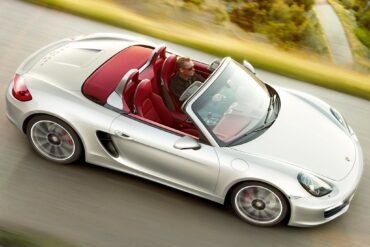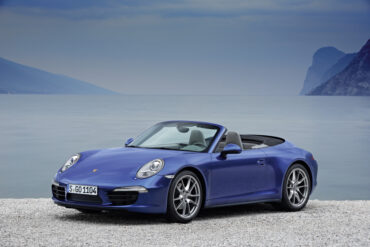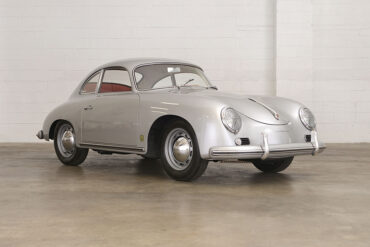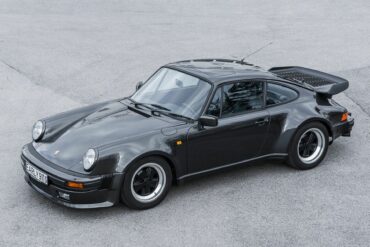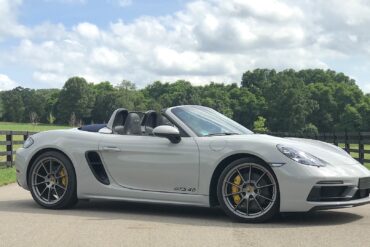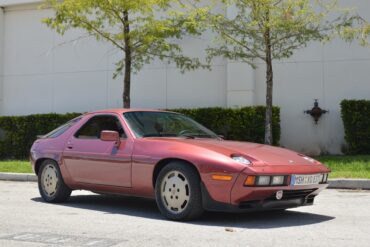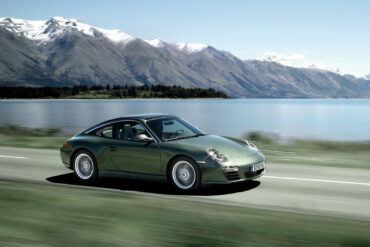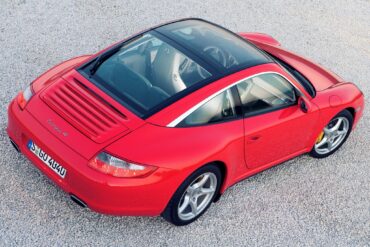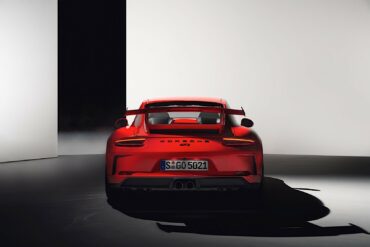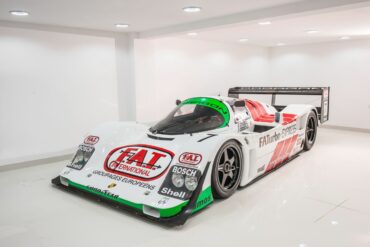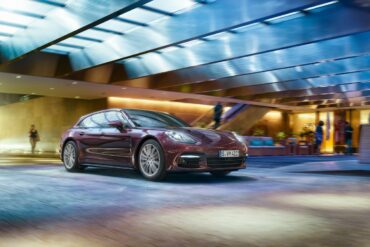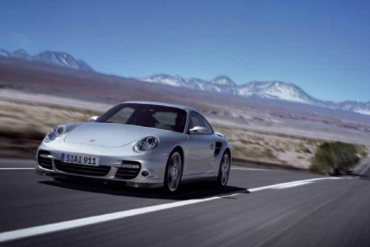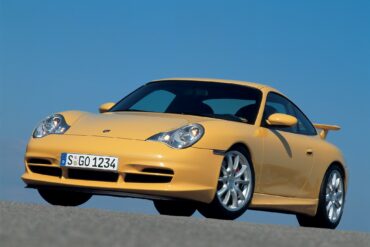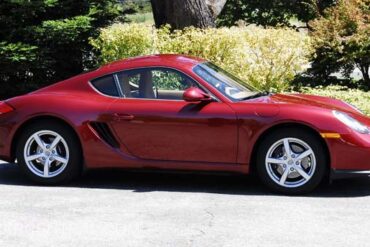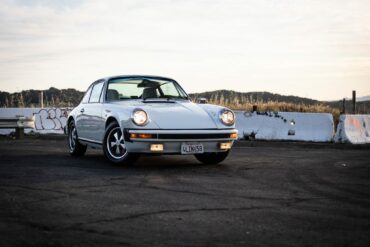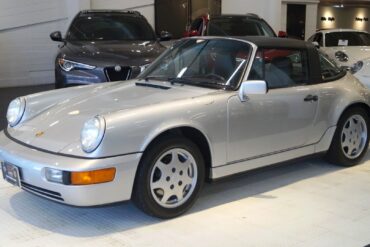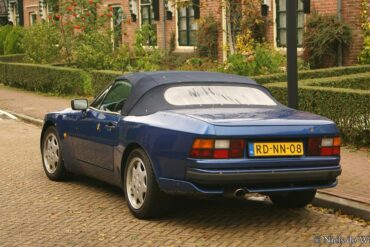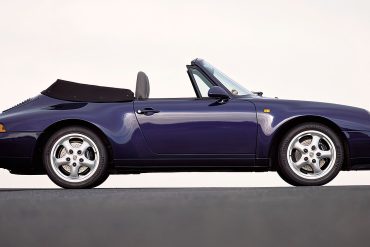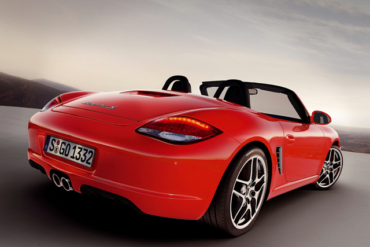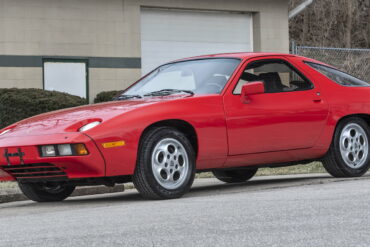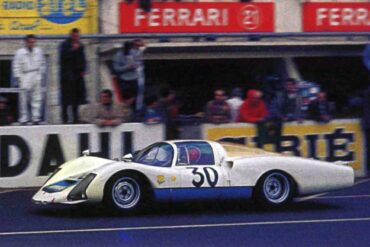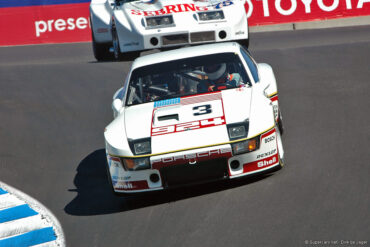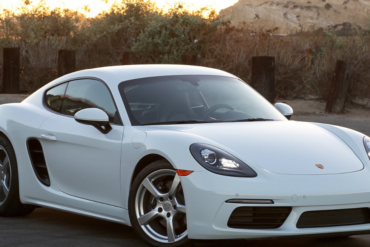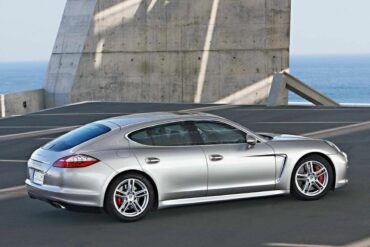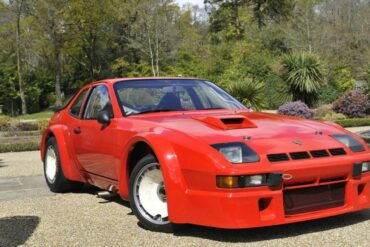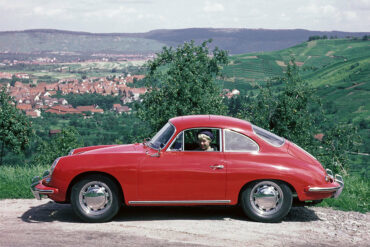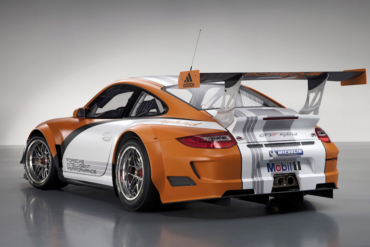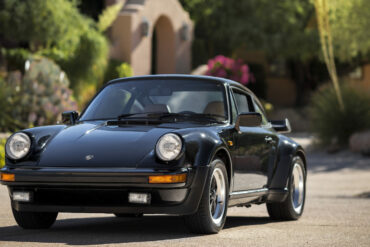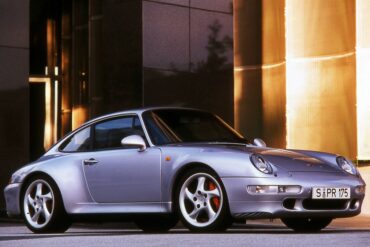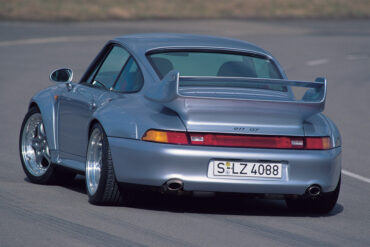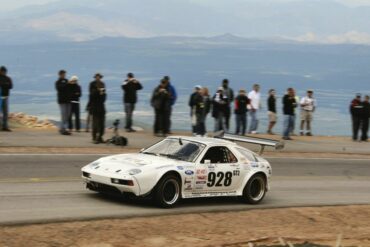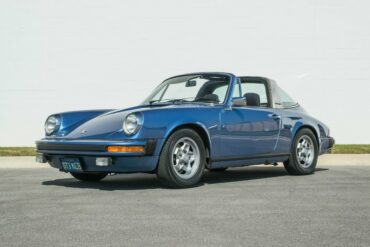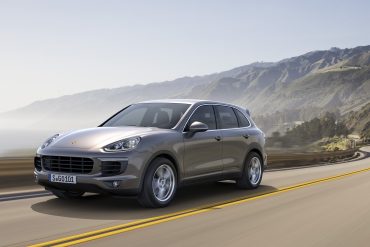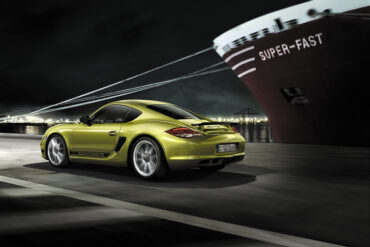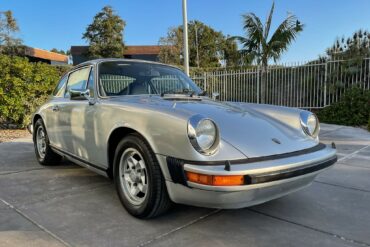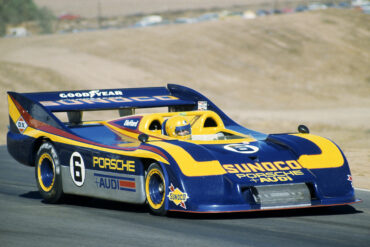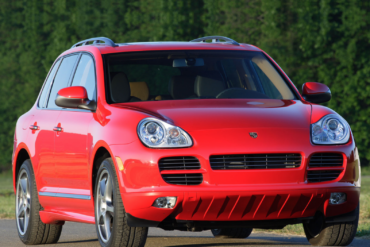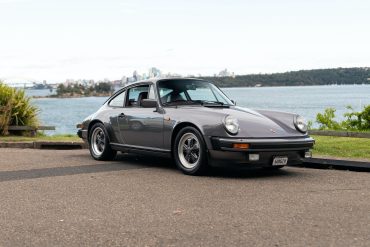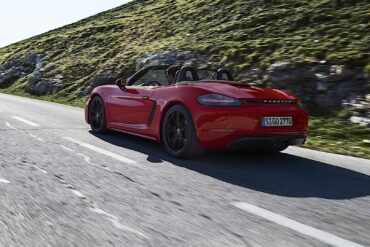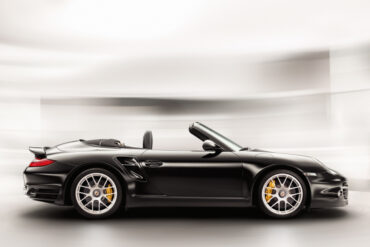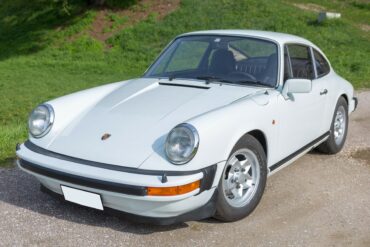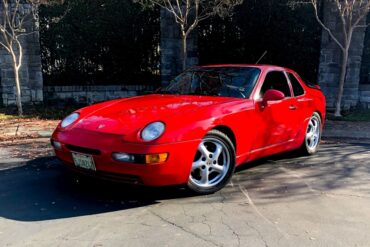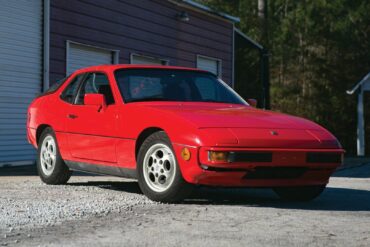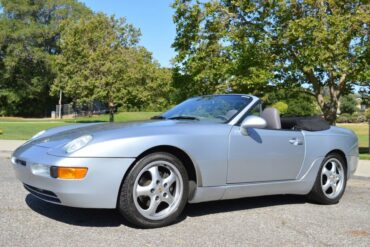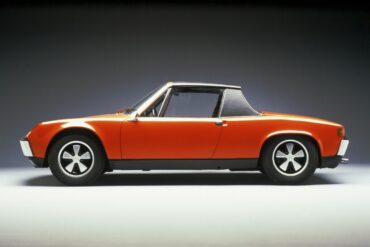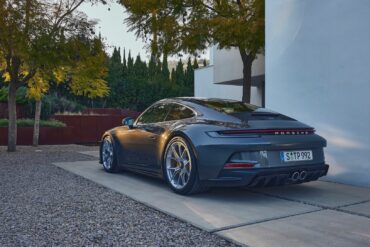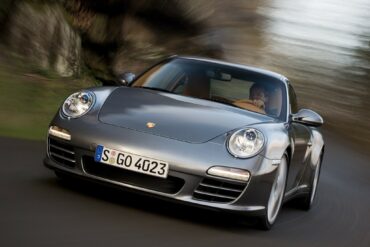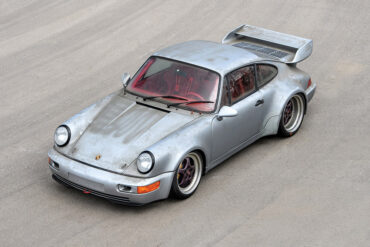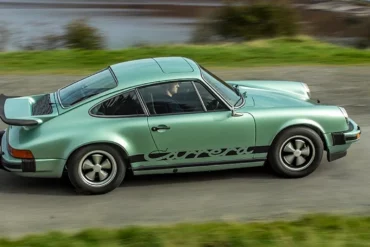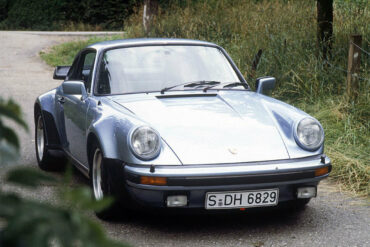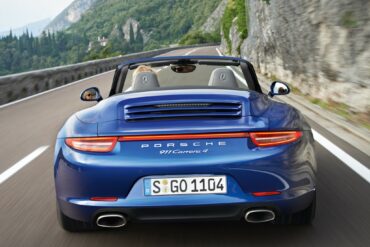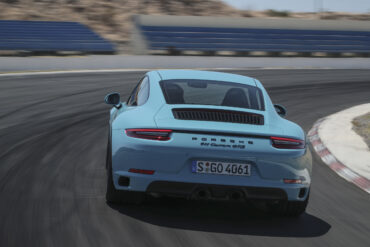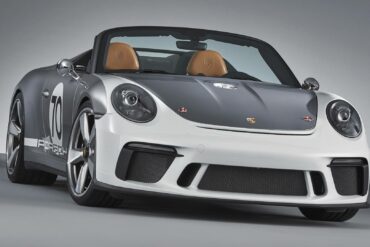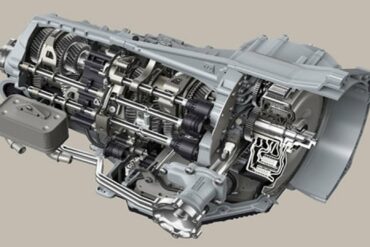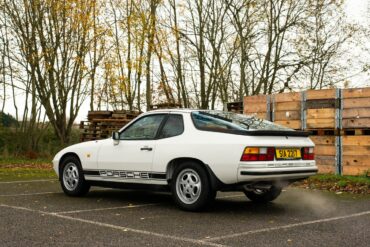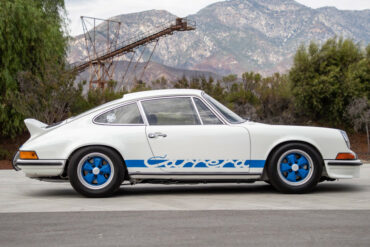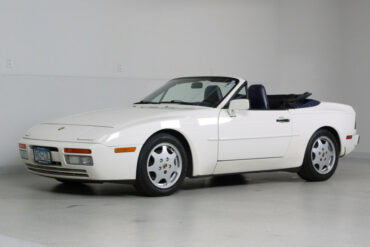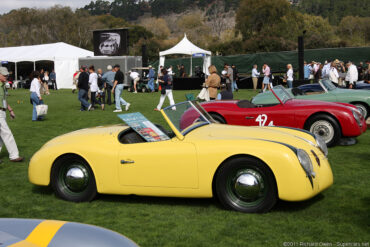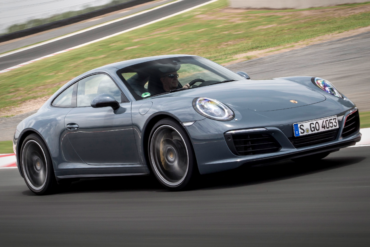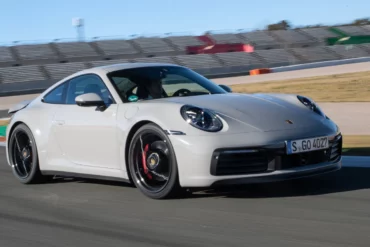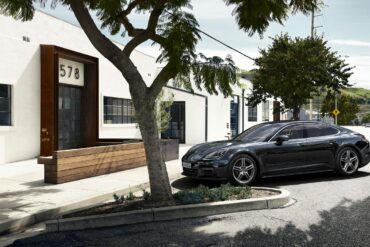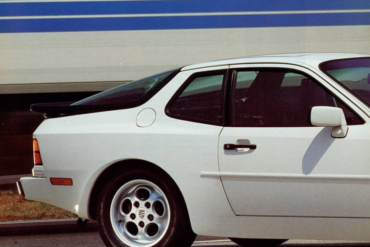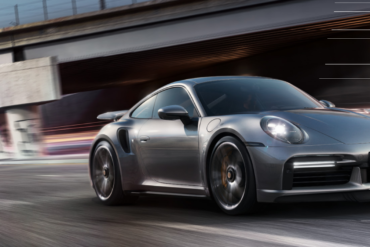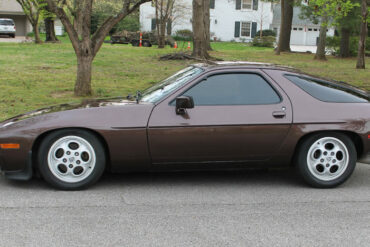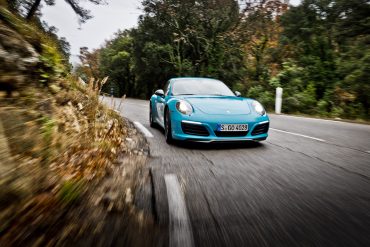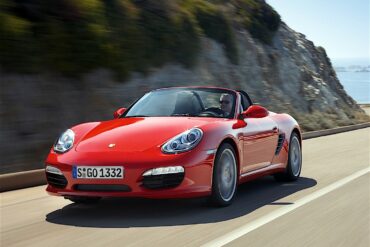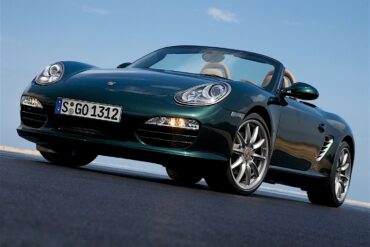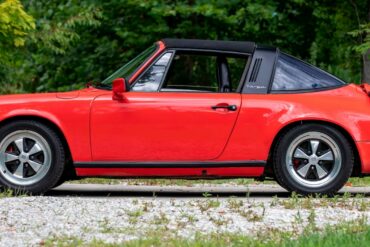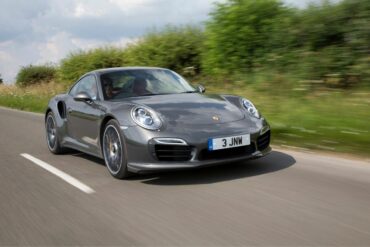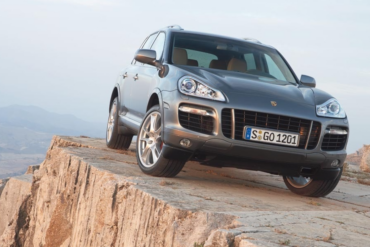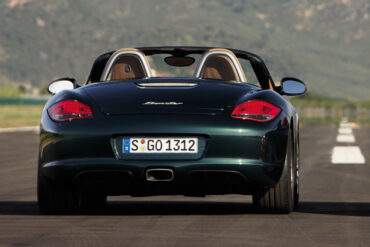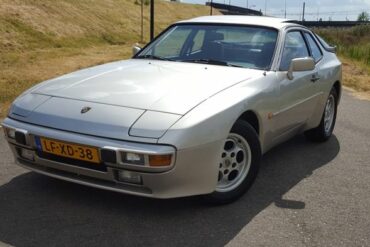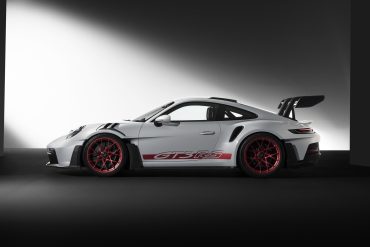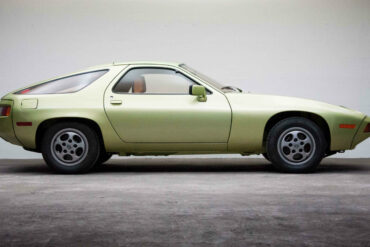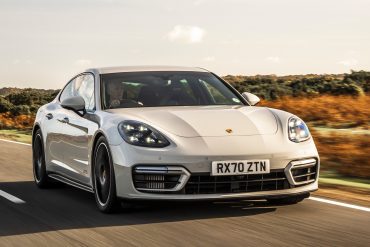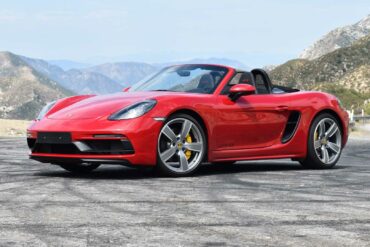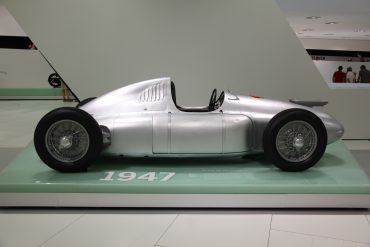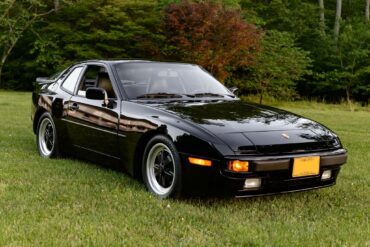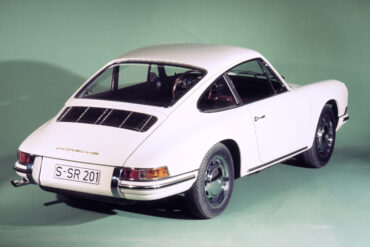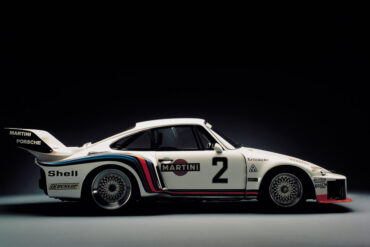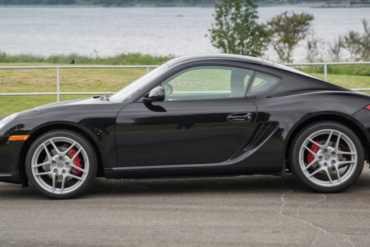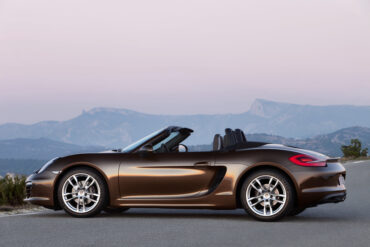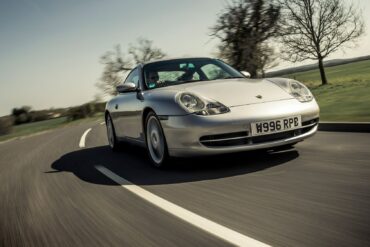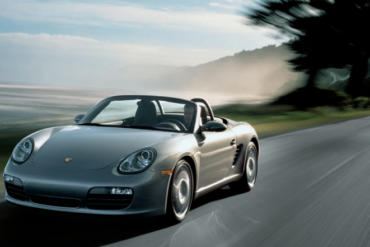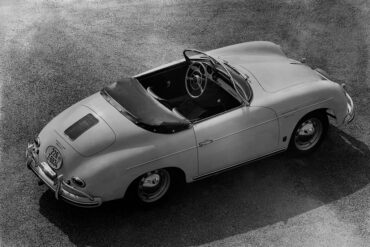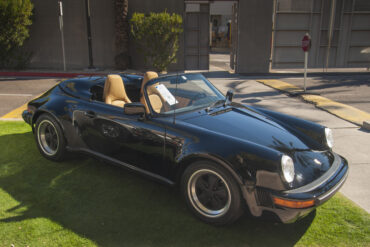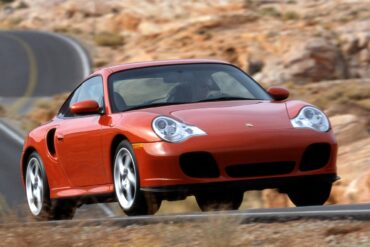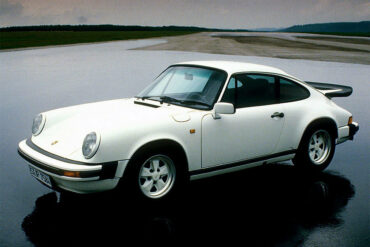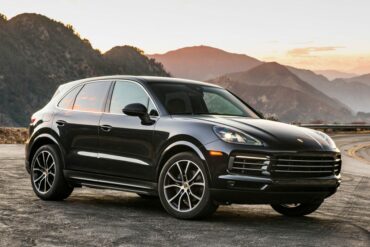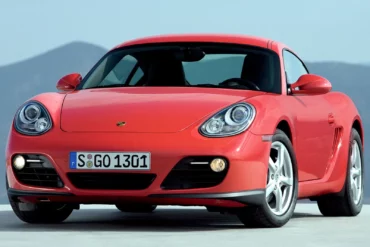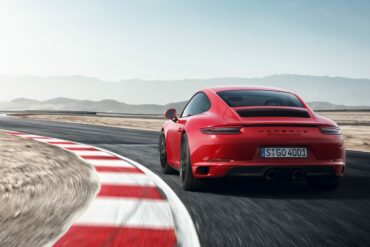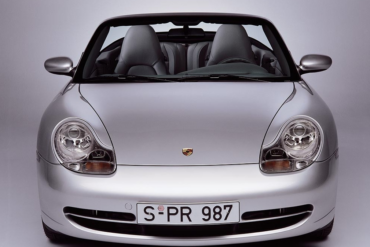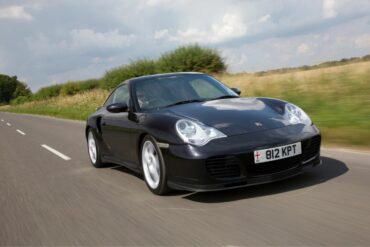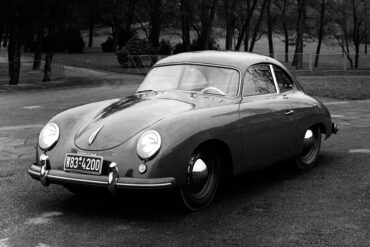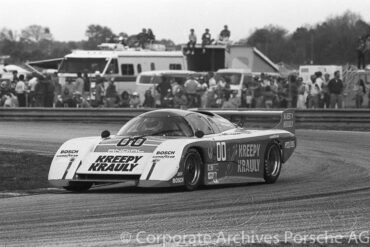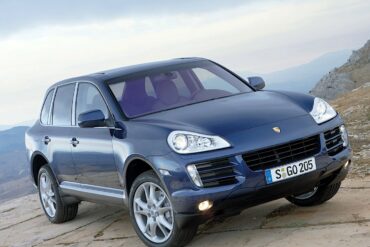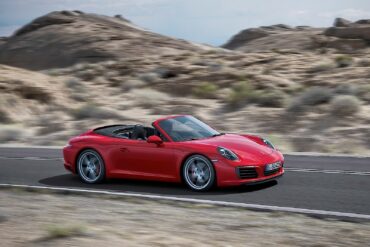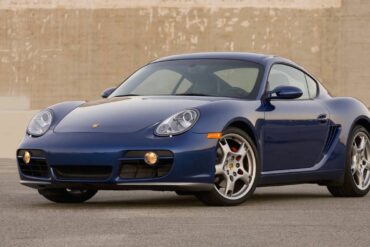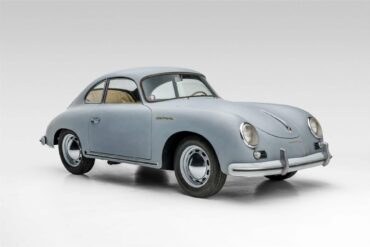2014 Porsche Boxster S (981) Technical Specifications type Series Production Car built at Stuttgart, Germany engine Flat-6 position Mid, Longitudinal...
The new Porsche 911 Carrera 4 unites the excellent performance and efficiency of the new generation of the 911 Carrera with the dynamic benefits of the latest version of the active all-wheel drive system PTM (Porsche Traction Management). The typical Porsche all-wheel drive with rear-focused layout in this latest 911 version guarantees maximum vehicle dynamics on a wide variety of road surfaces and in all weather conditions. The new 911 Carrera 4 models deliver traction and dynamic performance the power of four.
1956 – 1959 Porsche 356A/1600 Coupe Technical Specifications Production Years 1956 – 1958 Released At 1955 Frankfurt Motor Show Built...
Porsche Option Codes – Porsche 911 (1985 Model Year) Looking to decode your 1985 Porsche 911 option codes? Want to...
2021 Porsche 718 Boxster GTS 4.0 (982) Technical Specifications Engine Type Flat 6 Induction Naturally Aspirated Cooling Water-cooled Valvetrain Double...
1982 Porsche 928 Technical Specifications The Porsche Model 928 was launched in 1977 and was powered by a water-cooled V-8...
2010 Porsche 911 Targa 4 (997.2) Technical Specifications Engine Type Flat 6 Induction Normally-aspirated Cooling Water-cooled Valvetrain Double overhead camshafts Injection...
2007 Porsche 911 Targa (997) Technical Specifications Engine Type Flat 6 Induction Normally-aspirated Cooling Water-cooled Valvetrain Double overhead camshafts Injection...
2018 Porsche 911 GT3 (991.2) Technical Specifications Engine Engine Type Aluminium horizontally opposed and naturally aspirated engine Cylinders 6 Displacement 3,996...
Porsche 962-011 Works It was the first chassis built and developed at Weissach for the official factory supported Joest team,...
Porsche expanded the Panamera family with the addition of a new body version: The Porsche Panamera Sport Turismo. The Panamera 4 got the Sport Turismo treatment. The Panamera 4 Sport Turismos gets the same all-wheel drive system and underlying mechanicals. That means, it gets the base Panamera's 330-hp turbocharged 3.0-liter V-6. Porsche doesn't call the Sport Turismo a station wagon, but that's kinda sorta what it is.
Porsche 911 Sales Brochures (Type 997) We found quite a few Porsche sales brochures for the Type 997 911 generation....
The second generation GT3 takes all that was good about it's predecessor and then improves it! Power from the GT1 derived flat-6 is up by 21 bhp to 381 bhp (with an 8200 rpm redline), ride height is lowered for increased stability and also has an upgraded braking setup, as it features a 6-piston calipers on the front. Two versions are offered, the more extreme 'Clubsport' showing it's track day colors with a full roll cage, racing seat and a 6-point harness. The 996.2 GT3 was the first GT3 marketed in the North America. The new Porsche 911 GT3 comes with all the features of half a century Porsche motorsport. It is a sports car for the purist through and through.
2011 Porsche Cayman S Technical Specifications Engine Type Flat 6 Induction Normally-aspirated Cooling Water-cooled Valvetrain Double overhead camshafts Injection Port...
Porsche 911 (G-Body) Sales & Production Numbers (1974 – 1989) ...
1990 Porsche 911 Carrera 2 Targa (964) Technical Specifications Engine Type Flat 6 Induction Normally-aspirated Cooling Air/oil-cooled Valvetrain Single overhead...
The S2 was also available as a cabriolet, a first for the 944 line. The Cabriolet, engineered by American Sunroof Company, was rumored to be two years late in arriving on the market due to unprecedented chassis flex problems. The finished article, despite being 70 KG heavier than the coupe, displayed no obvious signs of such problems, and its clean lines found a place in many hearts.
Introduced in 1994 the Porsche 911 Cabriolet was more of a Grand Tourismo vehicle than a sports car. The 911 Cabrio featured the same cues as its coupe version, but with a few differences apart from the lack of a fixed roof, of course. The 3.6-liter engine was offered in two versions, with 275 hp and 285 hp. The latter featured the VarioCam system. Both versions were mated to either a 6-speed manual or a 4-speed automatic.
2011 Porsche Boxster S Technical Specifications Engine Type Flat 6 Induction Normally-aspirated Cooling Water-cooled Valvetrain Double overhead camshafts Injection Direct...
Porsche Option Codes – Porsche 928 (1979 Model Year) Looking to decode your 1979 Porsche 928 option codes? Want to...
The 906 LH was capable of achieving 174 mph/280 km/h with its 2-litre engine (906 K: 165 mph/265 km/h). At high speed the long tail started to create lift (opposite to downforce), which made the car go fast on the straight, but was dangerous to drive. At Le Mans, the 906 LHs with their experimental bodies competed in the 2-litre prototype class.
GTP cars were produced in 1980, three of which were special LeMans race cars. The cars had the 2.0L turbocharged 924 engine with a huge front-mounted intercooler and increased boost to increase output to 320 HP and 285 lbs/ft of torque. The engine used Bosch mechanical fuel injection and with a weight of 2050 pounds had a top speed of 180 mph. It was third in the GTP class, with an 6th place finish overall, and another finished fifth in class and 12th overall.
2019 Porsche 911 Speedster (991.2) Technical Specifications Engine Naturally aspirated flat-six (boxer) engine No of cylinders 6 Valves/cylinders 4 Displacement 3,996...
2019 Porsche 718 Cayman (982) Technical Specifications Engine Type Flat 4 Induction Turbocharged Cooling Water-cooled Valvetrain Double overhead camshafts Injection...
Porsche Option Codes – Porsche Panamera (2010 Model Year) Looking to decode your 2010 Porsche Panamera option codes? Want to...
The Carrera GTR was the ultimate 924 Street/Race Car in 1981. The GTR had larger flares, larger wheels and tires, improved brakes and a whopping 375 horsepower from the 2.0L turbocharged dry-sump engine. At $75,000, the GTR would have cost over $200,000 in today’s money, but what you got was a 180 mph screamer for the street, but in full race trim.
Introduced in 1963 for the 1964 model year, the base model Porsche 356 1600C Coupe was presented as the entry-level version of the last generation of the Porsche 356 Coupes. After offering standard/base model versions for the 356 A and 356 B with 60 HP engines, Porsche dropped the standard version as its base model and introduced the successor of the former mid-level 1600 Super engine variant with 75 HP, as the entry-level engine option for the 356 C generation. As with previous generations, it was also offered with the 356 C Cabriolet cars.
2011 Porsche 911 GT3 R Hybrid 2.0 (997) Technical Specifications Engine Configuration B6 Location Rear, longitudinally mounted Construction aluminium block...
Porsche Option Codes – Porsche 911 (1981 Model Year) Looking to decode your 1981 Porsche 911 option codes? Want to...
1996 Porsche 911 Carrera 4S (993) Technical Specifications Engine Type Flat 6 Induction Naturally Aspirated Cooling Air/oil-cooled Valvetrain Single overhead...
1998 Porsche 911 GT2 (993) Technical Specifications Engine Flat-6 Valvetrain SOHC 2 Valves / Cyl Displacement 3600 cc / 219.7...
In 2007, 2008 and 2009 American racing driver Carl Fausett took his specially prepared and supercharged 1978 Porsche 928 to the Pikes Peak International Hill Climb and competed in the Open Division. Fausett placed third in the Open Division in both 2007 and again in 2009, where he was also the fastest 2WD car. At that time, much of the race course was gravel.
Porsche Option Codes – Porsche 911 (1974 Model Year) Looking to decode your 1974 Porsche 911 option codes? Want to...
In July 2014, Porsche launched a facelifted Cayenne range for the 2015 model year. Minor exterior alterations and new power-train options. For the base Cayenne, there was a a mildly revised exterior and interior inspired by the 918 Spyder. Two new interior colors, Carrara White and Palladium Metallic, are new while the two-tone black/beige upholstery is now a no cost option. Dark walnut is also a new addition to the available interior accents. The suspension on all Cayennes has also been revised.
On November 17th - 2010, Porsche CEO Matthias Mueller unveiled the 2012 Cayman R to an excited audience at the Los Angeles International Auto Show. Porsche pretty much threw the kitchen sink at this one, applying all they know and have available without actually redesigning the car. Every performance option on the list, and then some that weren't on the list have found their way into the Cayman R. A weight savings of 121 lbs. (55 kg) was achieved and it transformed the Cayman. We are going out on a limb here, but we think the Cayman R may be one of the best Porsche cars ever made.
Commemorating 25 years of Porsche sports car production, the 911S Silver Anniversary Edition is distinguished by unique Diamond Silver Metallic paint and a special black leatherette and tweed interior. The first of Porsche’s commemorative ‘celebration’ cars, this Silver Anniversary was produced in a limited run of 1,063 examples, of which approximately 500 are reported to have made their way to the United States.
Porsche 917/30 Specifications type Racing Car built at Germany production 6 units engine Air Cooled, Magnesium/Aluminum Alloy Flat-12 position Mid...
The Cayenne S Titanium Edition was designed specifically for the U.S. and Canadian markets. Introduced only for 2006 (as a pre-GTS concept), it was a 1 year exclusive, limited production SUV featuring a lightweight steel body, aluminium hood, titanium-painted accented body parts, side lower rocker body panels, Sport-Quad Tip Exhaust chrome tailpipes, 19" titanium painted alloy wheels, bi-xenon headlights, two-tone interior upholstery, Porsche PCM 2.0 w/ trip computer navigation, MP3 audio and Bose cabin surround sound.
Finally, in 1982 the model 911 SP 'Ferry Porsche' was introduced as a special edition to celebrate 50 years of Porsche. This special edition was finished in Meteor metallic paint with burgundy leather interior and a 'Ferry Porsche' signature on the headrests. Only 200 of these now-classic special cars were built (130 Coupes and 70 Targas). The 911 SC “Jubilee” or “Ferry Porsche” is the first “limited series” sold in Europe.
2020 Porsche 718 Boxster T (982) Technical Specifications Engine Type Flat 4 Induction Turbocharged Cooling Water-cooled Valvetrain Double overhead camshafts...
2011 Porsche 911 Turbo S Cabriolet (997) Technical Specifications Engine Type Flat 6 Induction Twin-turbocharged Cooling Water-cooled Valvetrain Double overhead camshafts...
Production of the second generation 911 started in August 1973. The 1974 model year G-series derivative replaced the outgoing 1973 model year F-series. Visually, the new 911 was given a major facelift and all three production variants now came with fuel-injected 2.7-litre engines. The entry level 911 had 150bhp, the mid-range 911 S offered 175bhp and the flagship 911 Carrera came with 210bhp. Once again, customers were given the choice of either Coupe or Targa body styles.
Porsche Option Codes – Porsche 968 (1995 Model Year) Looking to decode your 1995 Porsche 968 option codes? Want to...
Porsche Option Codes – Porsche 924 (1988 Model Year) Looking to decode your 1988 Porsche 924 option codes? Want to...
1995 Porsche 968 Cabriolet Technical Specifications Engine Type Inline 4 Induction Normally-Aspirated Cooling Water-cooled Valvetrain Double overhead camshafts Injection Port injection...
Porsche Option Codes – Porsche 914 Looking to decode your Porsche 914 option codes? Want to know what those codes...
2023 Porsche 911 GT3 Touring (992) Technical Specifications Type Aluminium horizontally opposed and naturally aspirated engine Cylinders 6 Displacement 3,996...
Most importantly, the refreshed Carrera 4 and 4S lose the old multi-plate, viscous all-wheel-drive system in favor of the electronically controlled system from the 911 Turbo. The old system could send between 5 and 40 percent of engine torque to the front wheels once it had detected wheelspin. The new electronic system can anticipate traction losses and shift up to 100 percent of engine torque fore or aft. Porsche says the new AWD system reacts faster to traction changes, and doesn’t make the Carrera 4 significantly heavier.
With the 1993 Carrera 2 as the starting point, Porsche had to make at least 50 roadgoing cars in order to qualify this new model for the Carrera ADAC GT Cup, which served as the basis for a motor racing variant to come, the Carrera RSR 3.8. The RSR 3.8 was nothing short of an all-out race car that could be delivered to the track in a ‘just add driver’ form. The Porsche Carrera RSR 3.8 racked up a catalogue of impressive international race results right from the outset, winning overall at the Spa 24 Hours, Suzuka 1000km, and the 24 Hours of Interlagos.
In 1974 Porsche offered a high performance fuel injected Carrera specifically for the European market. These were close to 2.7 RS specification and are often referred to as the 2.7 or Euro Carrera. In many regards, this car is similar to the 1973 2.7 RS in touring trim, with its 210bhp 911/83 engine, but the 2.7 Carrera is based on the updated G-series body and interior. Later Carreras that reach American shores used had reduced power and throttle response compared to Euro counterparts.
1978 – 1989 Porsche 911 Turbo 3.3 (930) Technical Specifications Number of cylinders Boxer 6 Engine Code 930/60/66 Fuel type...
2015 Porsche 911 Carrera 4 Cabriolet (991) Technical Specifications Engine Type Flat 6 Induction Normally-aspirated Cooling Water-cooled Valvetrain Four overhead camshafts,...
2018 Porsche 911 Carrera GTS (991.2) Technical Specifications Engine Engine layout Rear Engine Engine type Boxer, twin-turbo Cylinders 6 Valves per...
Porsche is celebrating their 70 years in the making with the Porsche 911 Speedster Concept car. With the Carrera Cabriolet 4 body as its canvas, the Speedster concept pays homage to its predecessors - most notably, the Porsche 356 1500 Speedster. The limited production Speedster is immediately distinguishable from the current 911 line-up, with its “double bubble” tonneau cover and other unique offerings and design tweaks.
Porsche 911 (997) Transmission Codes The transmission number code is found on the transmission data plate. Code Transmission Model years...
Porsche 924 Spare Parts Catalogs (1980 – 1985 Model Year) These official Porsche PET Diagrams and codes for the Porsche...
Porsche Option Codes – Porsche 911 (1973 Model Year) Looking to decode your 1973 Porsche 911 option codes? Want to...
1991 Porsche 944 S2 Cabriolet Technical Specifications Engine Type Inline 4 Induction Normally-aspirated Cooling Water-cooled Valvetrain Double overhead camshafts Injection Port...
This isn't technically a Speedster, but the Type 540 (Typ 540 K/9-1 to be very precise) - known more commonly as the America Roadster - started the idea. The American Roadster was the direct predecessor of the Speedster. U.S. importer Max Hoffman convinced Porsche it needed a lightweight convertible to compete. It only had an emergency folding roof and could keep up with larger sports cars of the era. But the production methods used to create the America Roadster’s aluminum body proved to be too expensive, and in 1952 Porsche built only 21 units before its discontinuation in 1953.
2018 Porsche 911 Carrera 4 Coupe (991.2) Technical Specifications Engine layout Rear Engine Engine type Boxer, twin-turbo Cylinders 6 Valves per...
2023 Porsche 911 Carrera 4S Coupe (992) Technical Specifications PDK 992 Carrera S Specs Model 992 911 Carrera 4S Engine Engine...
Porsche launched the second generation Panamera for the 2017 model year. The updates were meaningful. The Panamera finally looked great, with a wider, lower, sleeker design that fixed all the hunchback look of the old design. Complementing the fresh threads is a completely reimagined interior, replete with touch-capacitive surfaces and massive display screens. The base Panamera got a 3.0-liter, turbo V-6 with 325 bhp and 332 ft lbs. Takes only 5.6 seconds to hit 60 mph and has a respectable 163 mph top speed.
Porsche 944 Sales Brochure The 944 was Porsche’s 3rd front engined sports car. Production years 1982-1991. Available as 944, 944S,...
Porsche 911 Sales Brochures (Type 992) We found quite a few Porsche sales brochures for the Type 992 911 generation....
1982 Porsche 928 S Technical Specifications Originally displacing 4.5 L and featuring a single overhead camshaft design, Porsche enlarged and...
2019 Porsche 911 Carrera T (991.2) Technical Specifications Make Porsche Model 911 Carrera Generation 2018 – Present Sub-Model Touring (T) Car...
The 2008 facelift of the Boxster S is powered by a new direct-injection 3.4-liter Boxer engine which develops more power than the earlier variant. The styling got a bit updated with some redesigned headlight casings, taillights, and bumpers, while the interior got new infotainment and more material/color combinations. There's a revised 6-speed manual as well as a new 7-speed PDK gearbox. Performance improves, with power now at 310 hp, rocketing the 987.2 Boxster S from 0 - 60 mph in just 5.2 seconds and to a top speed of 170 mph.
In 2008, the second generation of the Boxster received new technologies and more power. It reached almost the same power as the former Boxster S, from the first generation. The 2.9-liter unit replaced the older 2.7-liter engine and offered 10 hp more than the older engine. It was paired as standard to a 6-speed manual, and a 7-speed PDK (Porsche dual-clutch) automatic was available as an option. The outside gets some welcome design tweaks also, while on the inside we get some updates and more technology options.
Porsche Option Codes – Porsche 911 (1979 Model Year) Looking to decode your 1979 Porsche 911 option codes? Want to...
Porsche 911 Spare Parts Catalogs (991, 2012 – 2019 Model Year) These official Porsche PET Diagrams and codes for the...
The facelift for the first generation of the Cayenne was introduced in 2007. More powerful in every respect - that is how the new generation of the Porsche Cayenne entered the market. New striking face upfront on a wide and muscular body, with headlights in brand-new design, and with broader, even more powerful-looking wheel arches. The Turbo model 957, featuring a larger 4.8-L engine with 49 hp more power, 0–60 mph time of just 4.9 seconds.
987.2 Porsche Boxster & Porsche Boxster S Service Schedule This maintenance service schedule checklist is ONLY for the following Porsche...
The Swiss Special 944 was a very limited edition 944 Special produced in 1984. Only 200 944 Swiss Specials were produced and it was largely a design exercise, with several upgrades to the normal 944. The changes included, Red-colored stickers on the back of "Porsche” “944", Special size teledial rims, Seats , rear bench and door panels in 924 Carrera GT fabric and dashboard plastic parts in black instead of the standard silver.
2023 Porsche 911 GT3 RS (992) Technical Specifications Tech Specs Model 911 GT3 RS Design and cylinders Naturally aspirated flat...
Porsche 928 Transmission Codes We have already gone into depth on Porsche 928 option codes and 968 parts catalogs, but...
Porsche Option Codes – Porsche Panamera (2020 Model Year) Looking to decode your 2020 Porsche Panamera option codes? Want to...
2021 Porsche 718 Boxster GTS (982) Technical Specifications Engine Type Flat 4 Induction Turbocharged Cooling Water-cooled Valvetrain Double overhead camshafts...
The Cisitalia Grand Prix is a single-seater car for the postwar 1.5-litre supercharged Grand Prix class, built by Italian sports car manufacturer Cisitalia and introduced in 1949. It was designed on behalf of Cisitalia by Porsche between 1946–47, and is therefore also known by its Porsche project number, Typ 360. An extremely advanced design, it proved too complex to build for the small Italian firm (and lead to the financial downfall of the company).
1985 Porsche 944 Coupe Technical Specifications Engine Type Inline 4 Induction Normally-aspirated Cooling Water-cooled Valvetrain Single overhead camshaft Injection Port...
In 1963 Porsche introduced their seminal 901 at the 911 at the Frankfurt Motor Show which would be renamed 911 for the 1964 model year. The new car was sold alongside the 356C as an alternative with more power and room for a rear seat. At the 1963 Frankfurt show the public saw Porsches new direction. Compared to the 356 it had a longer wheelbase, a more compact suspension setup and much more power from the flat-6 engine.
The Group 4 racer based on the 911 Turbo (930) was called 934 and the Group 5 Porsche was called 935. The first version of the 935 looked similar to the 911 Carrera RSR. The first customers for 935 were Martini Racing and Kremer Racing. The Martini car was a full factory development, while Kremer made its own enhancements already before the first race. By 1977, the 935 was sold as a customer car for these series to race against cars like the BMW CSL.
2006-2013 Porsche Cayman Fuses Box Diagram and Amperages List This fuse box information is ONLY for the following Porsche models...
The third generation Boxster was a bigger car than the 987 it replaced, but it was also lighter and more powerful. The 2013 model year Boxster went through a downsize program and received a 2.7-liter boxer engine, which was 0.2-liter smaller than its predecessor. With 261 bhp @ 6700 rpm and 206 ft lbs @ 4500 rpm the base Boxster still felt underpowered to many. The base 981 Boxster got a 6-speed manual gearbox or you could opt for an optional 7-speed reworked PDK. The base car is plenty fast but if it were our money, we would opt for the more powerful Boxster S.
Porsche 911 Spare Parts Catalogs (996, 1998 – 2005 Model Year) These official Porsche PET Diagrams and codes for the...
Porsche Boxster (Second Generation) Sales Brochures We found several Porsche sales brochures for the second generation Boxster, which is known...
1956 – 1958 Porsche 356A/1500GS Carrera Cabriolet Technical Specifications Type Series Production Car Built At Germany Coachbuilder Reutter Karosserie Price...
1989 Porsche 911 3.2 Speedster (911) Technical Specifications Price $ USD $65,480 Engine Air-cooled Flat-6 Valvetrain SOHC Displacement 3164 cc...
2002 Porsche 911 Turbo (996) Technical Specifications Engine Type Flat 6 Induction Twin-turbocharged Cooling Water-cooled Valvetrain Double overhead camshafts Injection...
1987 – 1989 Porsche 911 Carrera 3.2 Clubsport (911) Technical Specifications Model 3.2 Clubsport Year 1987 – 1989 Price When...
The third generation of the Porsche Cayenne was unveiled in August 2017. The third generation Cayenne is built on a totally new platform, shared with SUVs like the Bentley Bentayga and Lamborghini Urus. It was fitted with important technical upgrades, such as the rear-axle steering system, which allowed a better cornering speed and an easier parking maneuver.
2010 Porsche Cayman Technical Specifications Engine Type Flat 6 Induction Normally-aspirated Cooling Water-cooled Valvetrain Double overhead camshafts Injection Port injection...
2019 Porsche 911 Carrera GTS (991.2) Technical Specifications Engine Engine layout Rear Engine Engine type Boxer, twin-turbo Cylinders 6 Valves per...
1999 Porsche 911 Carrera Cabriolet (996) Technical Specifications Engine Type Flat 6 Induction Normally-aspirated Cooling Water-cooled Valvetrain Double overhead camshafts...
1997-2006 Porsche 911 (996) Carrera, Carrera S, Carrera 4, Carrera 4S, Targa, Turbo Service Schedule This maintenance service schedule checklist...
The 1500 was Porsche’s newest engine which was quickly fitted with 40 PIBC Solex carburetors to produce 60 bhp @ 5000 rpm in 1952. These retained the Hirth roller-bearing crankshafts which gave Porsche enough clearance to enlarge their engine to 1500cc. Most cars from 1952 until the 356A of 1956 were powered by the 1500 engine but some left the factory with the smaller 1.1 and 1.3-liter engines. At the request of American importer Max Hoffman, 356s for the 1955 model year were badged as Continentals before reaching the U.S
Daytona 24 Hours, 4-5 February 1984: Sarel van der Merwe, Graham Duxbury and Tony Martin drove a fine race to...
Porsche Option Codes – Porsche Cayenne (2009 Model Year) Looking to decode your 2009 Porsche Cayenne option codes? Want to...
2019 Porsche 911 Carrera S Cabriolet (991.2) Technical Specifications Engine Engine layout Rear Engine Engine type Boxer, twin-turbo Cylinders 6 Valves...
Porsche Option Codes – 2007 Cayman Looking to decode your 2007 Porsche Cayman option codes? Want to know what those...
1956 – 1958 Porsche 356A/1500GS Carrera Coupe Technical Specifications Type Series Production Car Built At Germany Coachbuilder Reutter Karosserie Price $...


